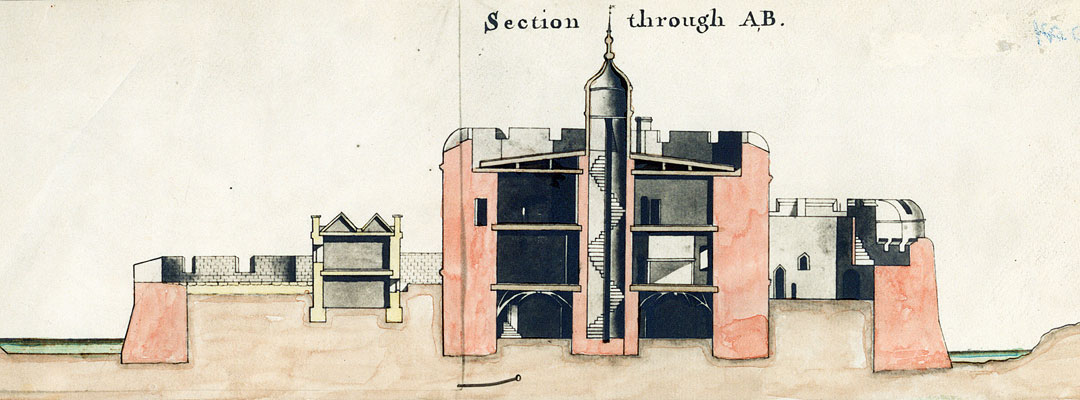Significance of Hurst Castle
Hurst Castle's importance lies in its strategic location, which made it a vital element in the defence of southern England from the Tudor period until the mid-20th century. Key developments in warfare and weapons may be traced through its construction and later modifications.

Henry VIII’s Castle
- Hurst Castle is part of a chain of artillery forts built by Henry VIII around the south and east coasts of England between 1539 and 1545. This was the first national system of coastal defence since the Roman period.
- Hurst is among the best preserved of Henry VIII's castles and one of very few of them to have been successively updated and strengthened, allowing it to retain an active military role into the mid-20th century.
- Despite later adaptations that removed or obscured some of the 16th-century fabric, the bulk of the Tudor fortress survives, enabling us to appreciate the skills of Henry VIII's designers and craftsmen.
Strategic Location and Military Significance
- Construction and subsequent modernisations and additions to the castle reflect both its strategic location and the development of warfare and weapons. Hurst was originally built to counter sailing warships when effective artillery was in its infancy; four centuries later its final wartime role saw it facing threats from vastly more powerful warships as well as submarines and aircraft.
- The castle's location made it a key fortress protecting the western seaward approach through the Solent to the port of Southampton, the fleet assembly point and anchorage at Spithead, and the naval base at Portsmouth.
- From the 18th century onwards, Portsmouth naval base became more important and its defences were strengthened and expanded. By the latter part of the 19th century the great ring of defences in this southern part of Hampshire and the Isle of Wight made it one of the most heavily fortified areas in the world, with Hurst Castle a key element.
- The 19th- and 20th-century alterations to the castle give a vivid picture of the ingenuity of successive military engineers as they modified and strengthened the site.
- The massive iron and teak shields fronting the gun casemates of the 1860–74 wings are very rare and largely unaltered. Such expensive protection was hardly ever used on land defences, and was generally employed on sea forts such as those guarding Spithead. The shields at Hurst are probably the least-altered and best-preserved examples.
- The continuing use of Hurst Castle into the mid-20th century has resulted in the survival of original equipment, including two of the 38-ton guns of the 1870s and later quick-firing weapons. Fixtures, fittings and equipment also survive from the garrison use of the castle, including the track of a light railway used to transport supplies from the jetty and the unique garrison theatre built in the Second World War in casemates in the west wing.
Surrounding Area
- The castle has a long association with Trinity House and is unique in having two lighthouses within its walls and a third outside on the spit, a reminder of the hazards to navigation here.
- Although Hurst Spit has no permanent population, the remains of the small settlement survive near the castle.
- The spit lies within a Site of Special Scientific Interest, stretching north-east from Hurst Spit, including the Keyhaven Marshes and the estuary of the Lymington River. This area has an important group of salt, brackish and freshwater habitats, supporting a great variety of wildlife, especially birds.
- Keyhaven Marshes were also home to a substantial salt extraction industry in the medieval period.
READ MORE ABOUT HURST CASTLE